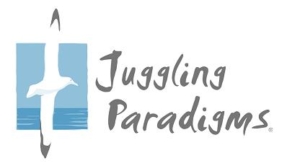Juggling Paradigms®
to reach Operational Excellence
Paradigms are thinking models used to solve problems.
Scrum, Six Sigma, Triz, Lean are some of these thinking models.
… and because there’s not such a thing as the perfect model that can fix any problem …
Juggling Paradigms® aims to develop the mental agility to switch from one Model (or Paradigm) to another, depending on the project, so that best solutions can be found.
Customer Focus
Scrum

Scrum is a Design Framework, meaning that its approach is Empirical. It’s not like a Process that must be strictly followed. Scrum is to be seen as principles that tend to promote the concept of agility based on the Agile Manifesto.
The Agile Manifesto was originally aimed for software development but it’s principles can actually be used for any kind of development.
Nowadays Scrum is used for Software development as well as for Hardware development and seen as one of the best Framework to reach customer satisfaction, as well as meeting deadline.
Robust Engineering
Six Sigma DFSS / DMAIC

There are two kind of “Six Sigma“; one (1) for Designing new products or processes and the second (2) for Improving existing products or processs.
(1) The first one called DFSS (Design For Six Sigma) can be split in two parts;
– One is about discovering and qualifying the VOC (Voice Of the Customer),
– One is about designing the solution and making it robust against variation.
(2) The second one (called DMAIC from its roadmap) is typically faster and easier because the product or process to be improved already exists. Thus:
– The VOC is simply about verifying it’s well qualified
– The second part is about improving based on what can be done considering the age of the equipment and its return on investment.
Systematic Creativity
Triz

Triz is systematic creativity process; meaning that it follows some steps that go from clarifying the problem to finding the invulnerable solution called Ideal Final Result or IFR.
Since its creation in 1946 it has grown and now includes other creativity methods for Diverge Thinking such as Osborn, De Bono, Herrmann, Reverse thinking … and for Converge Thinking such as Choice of Sparks, Lighting, Affinity Diagram, Pugh … and it’s now internationally recognized as the most powerful innovation process.
Innovation means the creation of something new and includes development of new products such as hardware or software but also production processes, measuring methods, new management practices, etc.
Rapid Delivery
Lean

